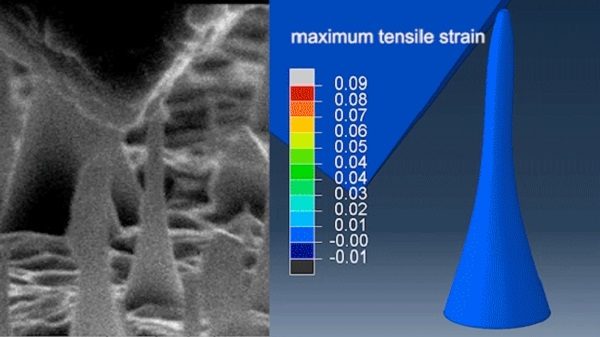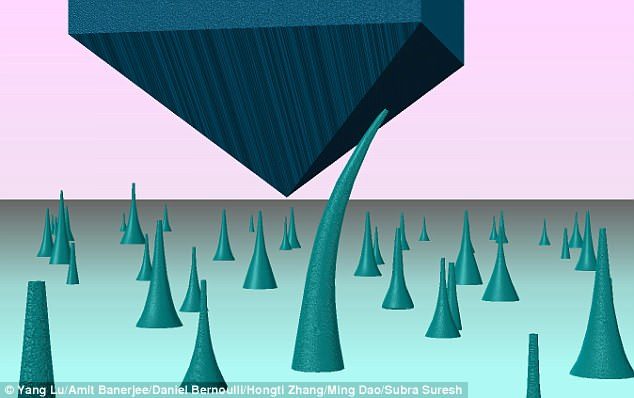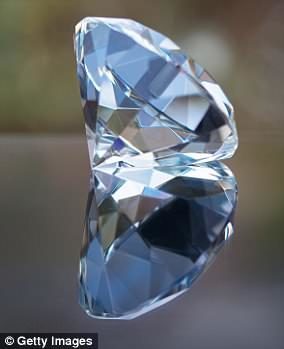
The breakthrough, albeit seen on an extremely small scale, could pave the way for devices made from ultra-strong and flexible diamond-based materials.
In the study, an international team of researchers found that tiny diamond needles measuring just a few micrometers tall could bend by as much as 9 percent without snapping - and, they reverted to their original shape afterward.
Researchers from MIT, Hong Kong, Singapore, and Korea collaborated on the groundbreaking new study to bend the strongest of all natural materials.
'It was very surprising to see the amount of elastic deformation the nanoscale diamond could sustain,' said MIT postdoc Daniel Bernoulli.
While diamond is extremely strong, it's also very brittle; in its normal form, the researcher says diamond's stretch limit falls far below 1 percent.
To create the tiny diamond needles, the team used a chemical vapor deposition process.
Then, they etched the needles into shape under a scanning electron microscope, using a nanoindenter diamond dip to press them down.
The team ran a number of experimental tests, and conducted simulations to determine how much stress the needles could withstand.
They also developed a computer model to map out the deformation.
In the study, an international team of researchers found that tiny diamond needles measuring just a few hundred nanometers across could bend by as much as 9 percent without snapping - and, they reverted to their original shape afterward (illustrated)

According to the researchers, the nanoscale diamond was capable of withstanding as much as 9 percent tensile strain.
This, however, varied depending on the structure of the diamond.
HOW ARE DIAMONDS FORMED?While needles made of a single crystal had a maximum tensile strain as high as 9 percent, it dropped to less than half of that for needles made from many grains of a diamond.
Naturally occurring diamonds were formed over 3 billion years ago deep within the Earth's crust under conditions of intense heat and pressure.
These conditions cause carbon atoms to crytallise, forming diamonds. Diamonds are found at a depth of approcimately 150 to 200 kilometres (93 - 124 miles).
Here, temperatures average 900 to 1,300 degrees Celsius, with pressures of 45 to 60 kilobars (which is around 50,000 times that of atmospheric pressure at the Earth's surface).
Under these conditions, molten lamproite and kimberlite (known as magma) are also formed within Earth's upper mantle, and they expand at rapid rates.
This expansion causes the magma to erupt, forcing it to Earth's surface and taking along with it diamond bearing rocks.
The magma erupts by forming a 'pipe' to the surface, and as it cools the magma hardens to form Kimberlite, settling in vertical structures called kimberlite pipes.
These pipes are the most significant sources of diamonds, yet only about 1 in every 200 kimberlite pipes contain gem-quality diamonds.
The name 'Kimberlite' comes from the South African town of Kimberley, where the first diamonds were found in this type of rock.
Source: Cape Town Diamond Museum
Up until the critical maximum point, the needles' deformation could be completely reversed if the probe was taken away.
According to the team, putting crystalline materials under these types of stresses can change their properties, from mechanical to magnetic and electronic, meaning 'elastic strain engineering' could be used to design materials for specific purposes.




Reader Comments
to our Newsletter